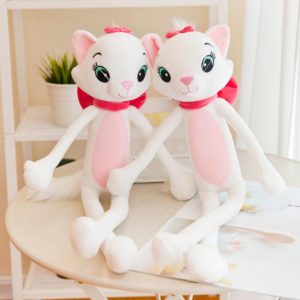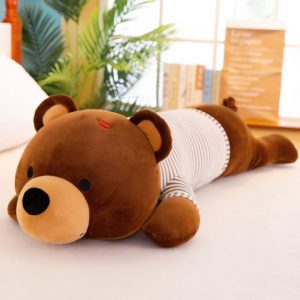The history of plush dolls can be traced back several centuries, and their evolution is a fascinating journey through time. Here’s a brief overview of their development:
- Early Origins (Ancient Times – 1800s): The concept of soft and stuffed toys can be found in ancient civilizations. Archaeologists have discovered stuffed animals made from various materials in ancient Egypt, Greece, and Rome. These early creations were often crafted from cloth, straw, or animal skins.
- Industrial Revolution and the Rise of Teddy Bears (Late 1800s – Early 1900s): The Industrial Revolution in the 19th century brought significant advancements in manufacturing techniques. In the late 1800s, German toy makers, including Margarete Steiff, started producing plush toys using new materials like mohair and cotton. In 1902, Richard Steiff created the world’s first teddy bear, inspired by drawings of Theodore “Teddy” Roosevelt, the American president at the time. Teddy bears quickly became a sensation and are still popular to this day.
- Character Licensing and Mass Production (Early to Mid-1900s): As the 20th century progressed, plush dolls began to feature licensed characters from popular media, such as comic strips, cartoons, and movies. This practice led to the creation of iconic plush dolls like Mickey Mouse, Winnie the Pooh, and Snoopy. Mass production techniques made these plush toys more affordable and widely available, further contributing to their popularity.
- Technological Advancements (Mid-1900s – Present): In the mid-20th century, advancements in materials and manufacturing processes allowed for the creation of even softer and more lifelike plush dolls. Synthetic materials like polyester fiberfill and plush fabric became widely used. Additionally, the introduction of computer-aided design (CAD) and digital printing technology has enabled the production of highly detailed and realistic plush dolls.
- Collectible Plush Dolls (Late 1900s – Present): As the popularity of plush dolls continued to grow, collectible plush toys emerged as a niche market. Limited-edition and artist-designed plush dolls became sought-after items for collectors, adding a new dimension to the world of plush toys.
- Cultural Impact and Merchandising (Late 1900s – Present): Plush dolls have become cultural icons and play significant roles in marketing and merchandising. Many characters from books, movies, TV shows, and video games are transformed into plush toys as part of extensive merchandise campaigns.
Today, plush dolls come in countless shapes, sizes, and designs, appealing to people of all ages worldwide. From beloved fictional characters to custom creations, plush dolls continue to hold a special place in the hearts of individuals and remain a cherished form of companionship and comfort.








